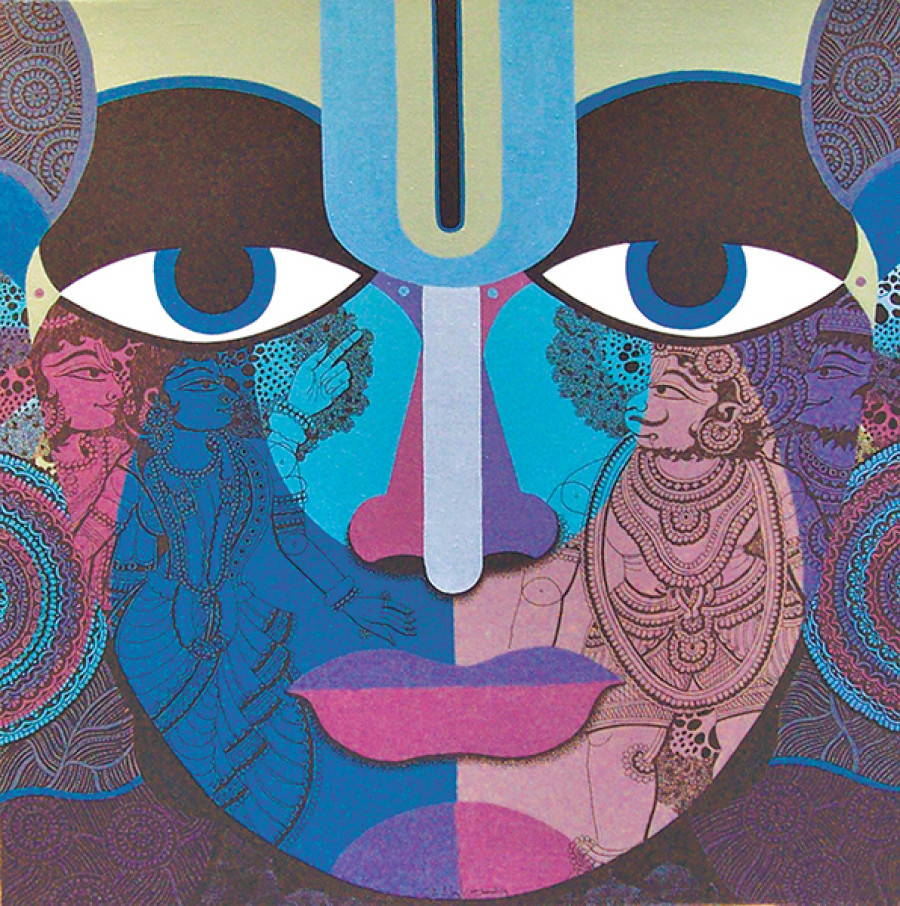Opinion
Ram Rajya and Ram Naam
Ram Rajya, the reign of Lord Sri Ram in Ayodhya was characterised by moral values, rectitude, discipline and truthfulness.
Niranjan Mani Dixit
Ram Rajya, the reign of Lord Sri Ram in Ayodhya was characterised by moral values, rectitude, discipline and truthfulness. Lord Ram is celebrated for his prosperous and ‘democratic-righteous’ reign, and he is the archetype of exemplary governance, justice and discipline. Ram Rajya ordains sincere, committed and consistent efforts at both the individual and collective levels. The divine epic the Ramayana was written by Sage Valmiki. His spiritual hermitage, Valmiki Ashram, was located near the Narayani River near Tribeni in present-day Nepal. Goddess Mother Sita was born in Janakpur, Nepal, and her father King Janak was a renowned patron of Vedic culture and philosophy. Ram gave up his right to be king and agreed to 14 years of exile in the forest at the request of his old father, Dashrath, who was under pressure from his second wife, Kaikeyi.
Omnipresent, omnipotent, omniscient
Lord Ram is the seventh avatar (incarnation) of Lord Vishnu. He is the ‘purshottam’ (ultimate man) and is depicted as ‘maryadapurshottam’, the ideal personification of gentleness, loyalty, integrity, righteousness, love and ‘karuna’ (compassion). He is the consort of Goddess Sita and master of Sankat Mochan Hanuman, the 11th Rudra or incarnation of Lord Shiva. When Lord Vishnu appeared on earth as Sri Ram, Lord Shiva took the form of a monkey, Hanuman-ji, to serve his master who destroyed the Asura, a ruler with demonic and evil designs named Ravana. By slaying Ravana, who had 10 heads symbolising ‘vehemence, pride, anger, greed, infatuation, lust, hatred, jealousy, crookedness and self-centeredness’, Lord Ram restored the rule of righteousness and goodness over ‘adharma’ (immoral and sinful) and lawlessness.
Ram Navami, an auspicious carnival dedicated to Lord Ram on the occasion of his birthday, is of vast importance to Hindus. It also enables us to drench ourselves with the spirit of Lord Ram for bringing about everlasting peace, prosperity and welfare. Raghu means Sun, and Lord Ram is also known as Raghunath or Raghupati. The best time to propitiate Lord Ram on Ram Navami is when the sun is overhead and shines with brilliance. Devotees chanting Ram Naam (holy name) take out a Rath Yatra, a procession led by a gaily decorated chariot in which are placed idols of Ram, Sita, Laxman and Hanuman.
Ram Navami is widely celebrated by worshippers of Lord Shiva too. It was Shiva who had initially narrated the story of Ram Katha to his consort, Goddess Parvati. Devotees create a devout ambiance by singing religious songs and cantos of Ramcharitmanas, an epic poem written in the Awadhi language by Goswami Tulsidas. Continuously chanting holy mantras and Ram Naam along with Hare Ram Hare Ram, Ram Ram Hare Hare, Hare Krishna Hare Krishna, Krishna Krishna Hare Hare, and listening to the story of Ram and meditating on him, cleanses the soul and eases the pains of life and leads one to ‘moksha’ (liberation).
Learning from Hanuman-ji, the ultimate devotee of Sri Ram, Valmiki realised that the idea of Ram was greater than Ram. Sri Ram is omnipresent, omnipotent and omniscient. Enthroned in our hearts, the image of Lord Ram who is of dark complexion is reflected in the heart of Lord Shiva. Lord Shiva’s meditational devotion to Lord Ram is perpetual. Uttering ‘Ram’ and meditating upon him helps one to lead a righteous life and remove ignorance, passion and sin.
It is the definitive, speedy and easiest way to attain purity, peace, wisdom, understanding, joy, prosperity and ultimately liberation.
Build bridges
Mahatma Gandhi, while breathing his last after being shot, had no words of retribution or anger for his murderers. Instead, his face shining with divine effulgence, he uttered, “He Ram, He Ram, He Ram.” In another incident, a burglar named Ratnakara started chanting the name of Ram incessantly after being advised by Vedic Sage Narada Muni to do so. As a result, the radiance of Ram was seen on his countenance and he became Sage Valmiki. Devoted to the prosperity and happiness of the people and the motherland, Lord Ram was a defender of the weak and a protector of the righteous. Deep and unfathomed, he was like the ocean—firm, steadfast and noble. Lord Ram said to his brother Lakshman after their victory over demon king Ravana in Lanka, “Janani Janmabhoomischa Swargadapi Gariyasi.” This quotation meaning ‘mother and motherland are greater and more sacred than heaven’ is emblazoned on the national emblem of Nepal as a call to follow in its true sense the principle of unity among diversity.
The supreme message of the Ramayana is that one should choose Dharma (duty and righteousness) over Artha (wealth and power), and Moksha (liberation) over Kama (desires of the mind and the physical body). It is by building bridges, not burning them, that we can win the war of righteousness over evil just as Lord Ram did by building the bridge ‘setu’ to Lanka where lived Ravana who had envious desires and evil designs. Our mission in life should be to obliterate demonic tendencies in our hearts and actions.
Dixit is an expert in integrated development issues




 7.12°C Kathmandu
7.12°C Kathmandu










